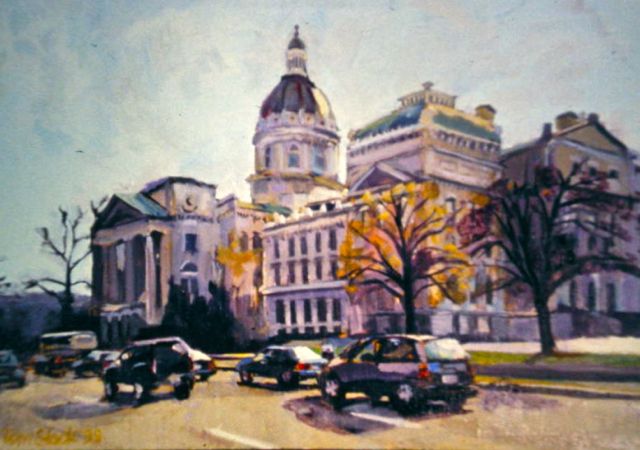
I did this painting in 1999 and it shows the Indiana State Capitol building. It has three-point perspective with two vanishing points. If you look at the corner of the closest building, finding its top point, you can imagine a line going rightward to the top of the next section and then off the page. Now look at the vehicle on the right, imagine a line following the shadow on the road behind it and think of it also as going off the page. Where it intersects with the top line is the right side vanishing point.
You also can go to the left from the top corner of the closest corner and imagine the line going to the top of the section on the left of the dome, and off of the page. Also on the left side, imagine a line from the road stripes on the left side of the painting that intersects with the line from the top. This will be the vanishing point on the left. This is called linear perspective and it gives dimension to the painting.
The cars on the left are smaller than the ones on the right. This is atmospheric perspective. It gives the illusion that the smaller cars are further down the road than the larger one.
Also, there is a yellow highlight on the right side of the capitol dome and blue shadows on the left side of the cars, giving the illusion that the sun is shining from the right to left of the painting.
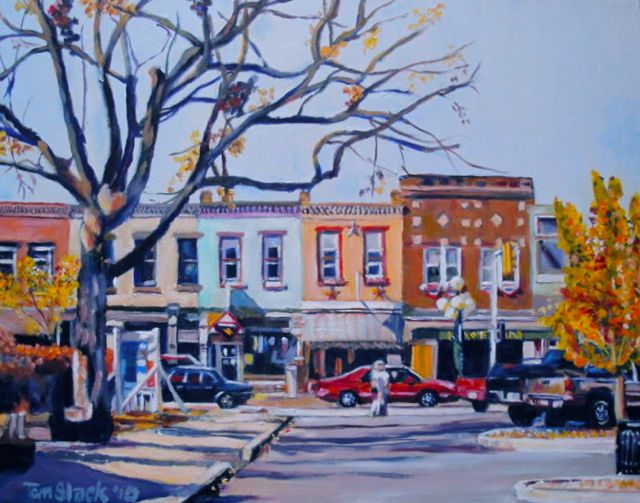
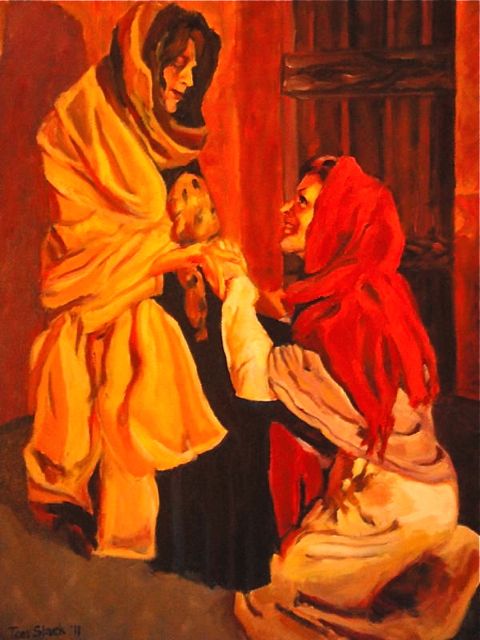

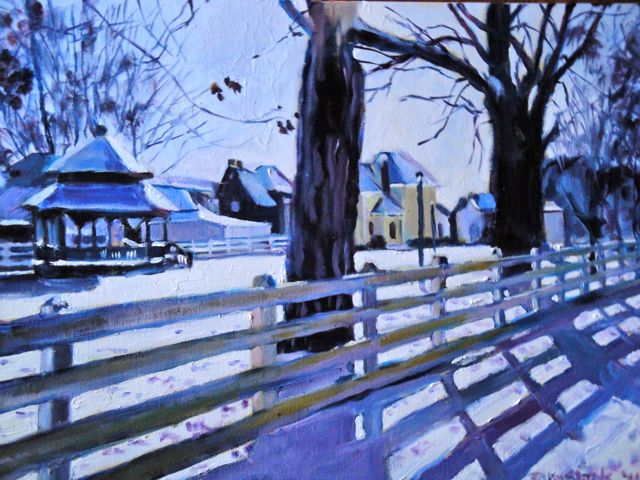
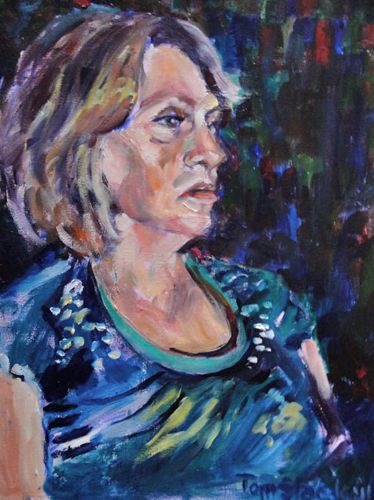
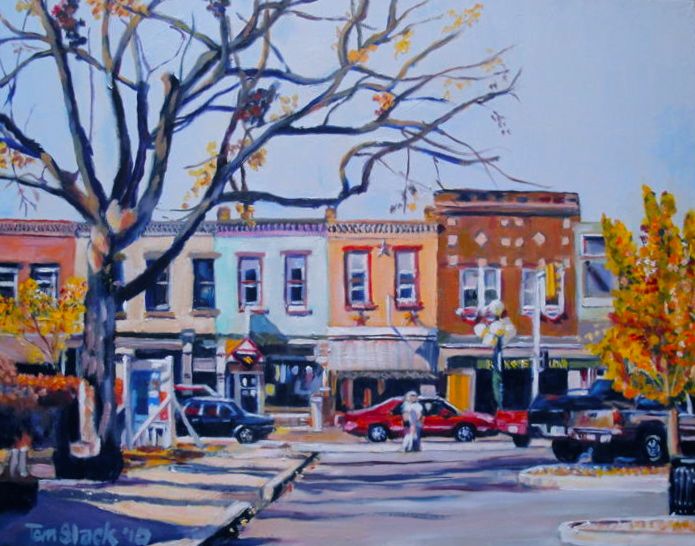


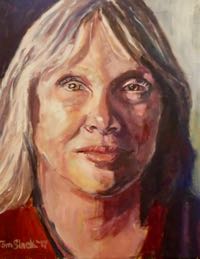
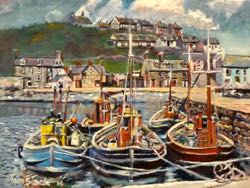

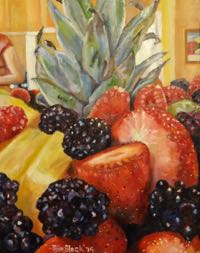
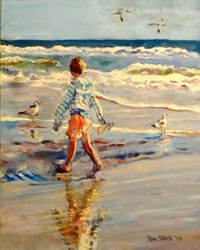
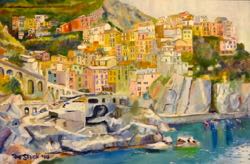
Recent Comments